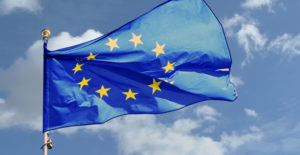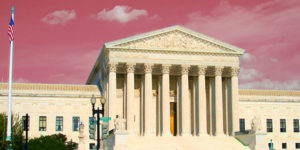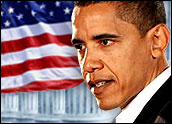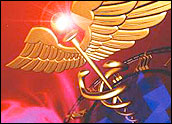
Pick a room — any room. There are lots of choices of places to stay for travelers in the U.S. In fact, there are 4.4 million guestrooms across the country, according to the American Hotel and Lodging Association. And that’s a problem. Competitors in the hospitality sector need some kind of an edge to gain new customers and, even more importantly, to keep their current customers coming back to the same hospitality brand whether the actual guestroom is in New York, Denver, or anywhere else.
That’s where an active CRM system fits in. For the major hotel chains, utilizing CRM is a way of life.
“For the really big hotel chains, the use of CRM is very robust, but they tend to focus almost exclusively on using CRM tools for loyalty programs,” Maureen O’Hanlon, senior partner at the Prism Partnership, told CRM Buyer. Hotel loyalty programs are designed to build repeat business with frequent-guest rewards, borrowing from the model of airline frequent flyer programs.
“I’d say 95 percent of the hotel programs are focused on frequent travelers,” O’Hanlon said. “The hotels are trying to fill rooms that would otherwise go empty just like the airlines are trying to fill seats.”
Hotels Lag in CRM
Generally, the hotel industry programs feature such rewards as extended stays at a discount or for free, or offering discounted rooms at a later date based on points accumulated from frequent stays at a facility operated by a particular hotel chain. However, moving beyond the free room concept into broader and more innovative applications of CRM has been problematic in the industry.
“The large chains and casinos are more involved with CRM than the small brands and independents,” Jason Price, executive vice president of Hospitality e-Business Strategies, told CRM Buyer, “but the entire industry lags behind the airlines and online travel agents.”
Regarding CRM systems, “the online travel agents get it, and devote a lot more attention to this side of the business than the hotel industry at large,” said Price. “The cost and need for hotels is greater than ever, and yet hotels are still the slowest and most reluctant to apply simple CRM exercises to their daily business practice.”
As a case in point, Price cites the example of a small Midwestern group of hotels that generated more than US$1 million in extra revenue by simply upselling their hotel suites through their reservation confirmation messages. After a customer made a reservation, the hotel sent a confirmation letter with the offer to upgrade from a standard room to a suite for a modest additional fee.
“Any hotel can do this, and yet most do not,” Price said.
More recently, larger hotels have been tweaking their rewards programs by offering incentives beyond discounted or free rooms.
“They are getting more sophisticated and using tie-ins to the hotel gift shop, or the hotel restaurants, or other types of merchandise offers,” O’Hanlon said.
Tracking Customer Behavior
However important rewards programs might be, they are still only one aspect of CRM. Equally important is the need to learn more about customer behavior so as to design offers tailored to a type of customer or even to individual customers.
“The gaming resorts and casinos have done some innovative things in terms of enhancing the customer experience,” Suzanne Clayton, director of gaming and hospitality at SAS Institute, told CRM Buyer.
When guests check in at Harrah’s Casinos, for example, they are given a casino card that acts like a credit card and can be used to gain access to gaming rooms and machines, the resort spa, restaurants and other places within the casino, said Clayton.
“As a result, the casino gets a real-time history of where the customer is spending his time on the site, and they can offer rewards or discounts and other promotions based on those patterns,” she explained. “Because it’s real-time, they can even offer the incentives during the current stay or as an inducement to gain repeat business.”
The larger hotel chains are beginning to make progress in providing a better customer experience by using CRM tools, O’Hanlon said.
“They are improving the use of all the data they have on customers in terms of guest histories, and demographic or psychographic information,” she said.
The hotels, for example, can break out information on room preferences that are suitable to families with small children or teenagers; keep tabs on special needs such as non-allergenic pillows or other details that “tell the customer that they are valued,” O’Hanlon pointed out.
Some chains are better at such targeting than others she noted, but all seem to see the need to enhance their CRM capabilities.
The large hotel chains, of course, do not account for the entire hospitality sector. In fact, there are more than 49,000 guest properties in the U.S. that have a minimum of 15 rooms, according to the American Hotel and Lodging Association.
Second Tier Offers Big CRM Potential
“Once you get below the big outfits, the whole sector has underutilized the tools available through CRM programs,” Gregg Hopkins, president of Libra OnDemand, told CRM Buyer. A little more than a year ago, Hopkins established his company to provide CRM assistance not only to large hotel chains but also to mid-sized and smaller firms in the sector.
“A lot of hotels at the mid-size level or below think CRM means using email to contact customers, and that’s it,” Hopkins said. However, the technology and programs exist for hospitality providers at this level to implement more extensive CRM programs.
“It’s possible for these hotels to gather the necessary data to improve their customer contact and develop programs,” he added. “In fact, a rewards program might not be appropriate, because they don’t have a lot of units in their chain — but there are other things they can use to improve the ability to recognize customers and provide a good experience. But right now there’s a lot of educating to be done for these hotels in terms of using CRM.”
SalesForce.com is Hopkins’ platform of choice for CRM. The hosted model lets hotels implement programs with a modest investment, he noted.
Systems can be deployed for $75,000 to $120,000 per year for a single property, Hopkins said. In a recent advisory, he advocated the enhanced use of hotel Web sites as the focal point for building a CRM system at an affordable cost.
“Today’s technologies allow Web sites, regardless of the hotel company’s size, to feature CRM capabilities by seamlessly integrating the Web site with the customer relationship management application,” he said. “Customers accessing the Web site can take the initiative to manage their personal information, update their preferences, and track rewards in a safe, secure environment that they control.”
It’s clear that computerized reservation systems and rewards programs are almost universal in the hospitality sector, but hotels at all levels can do much more in capturing and managing guest information and designing customer-friendly programs through the efficient use of CRM tools.
“A lot of money is being thrown at CRM programs,” O’Hanlon said — but that doesn’t mean CRM usage has reached its full potential.
“There is a lot of data being generated, but it depends on how it is used,” she emphasized. “The tools exist. It’s a matter of chief executives figuring out what their goals are.”






















































